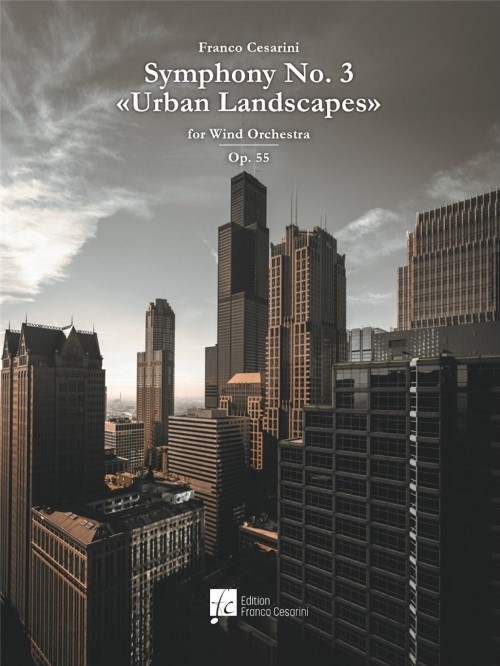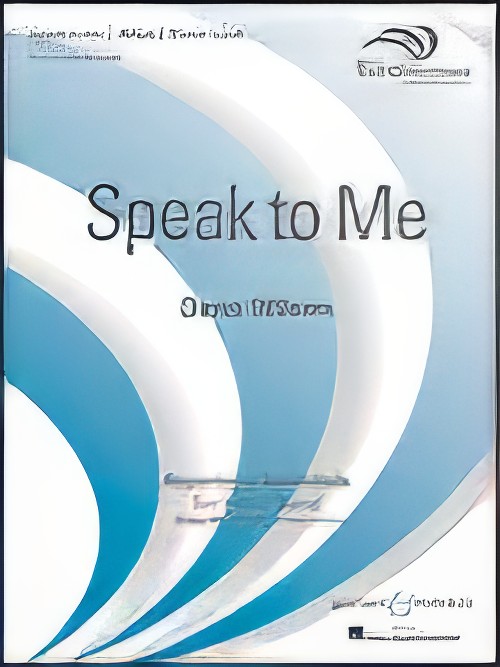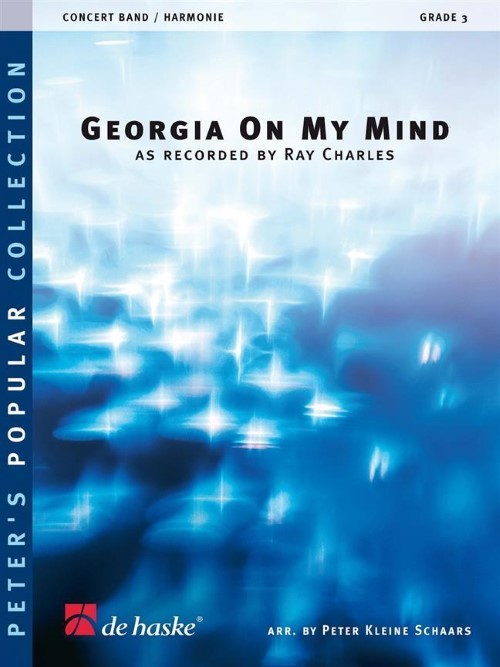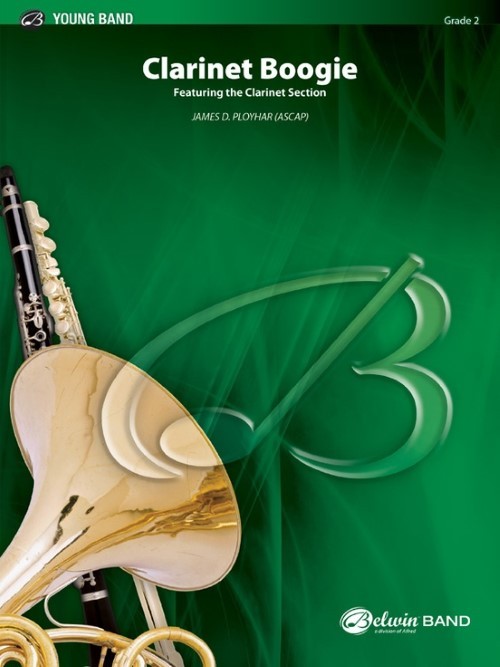Results
-
 £407.00
£407.00Symphony No.3 (Urban Landscapes) (Concert Band - Score and Parts) - Cesarini, Franco
Fascinated by the beauty of Chicago, Franco Cesarini has translated his emotions into music: this is how Symphony No. 3 "Urban Landscapes" Op. 55, was born, a musical portrait of this metropolis overlooking Lake Michigan. The composition is divided into three movements: The Wrigley Building from Dawn to Noon, Blue Silhouette and Cloud Gates, which by sharing the same thematic material arranged in cyclical form, strengthen the overall cohesion of the piece. The first movement, preceded by a short slow introduction in which the main theme is presented in an almost dreamlike form, metaphorically represents the city at dawn. The sudden change of time symbolizes the start of activities with all its noises and sounds: you can hear the bell that announces the closing of the subway doors, the sound of cars speeding by, the siren of a patrol car. If the first movement represents the day, the second introduces a nocturnal environment: a melancholic melody played by the English horn anticipates a more animated tempo depicting melodies coming from jazz clubs. Powerful fanfares that take up the second theme of the first movement introduce the third movement. In this finale, the role of the two themes is reversed compared to the first movement and one takes the place of the other in a kind of games of mirrors. Symphony No. 3 "Urban Landscapes" Op. 55: a sumptuous musical portrait of the "Windy City". Duration: 27.00
Estimated dispatch 7-14 working days
-
 £85.00
£85.00Speak to Me (Concert Band - Score and Parts) - Wilson, Dana
There is a long tradition in jazz of instruments carrying on a conversation - either intricate with soloistic dialogues (often improvised) or the call and response of larger forces. Speak to Me is above all such a conversation, at first among soloists and then among more and more performers as they gradually join in. This piece begins with a simple tune that increasingly overlaps with and is interrupted by other ideas, generating enormous energy along the way. Duration: 5:00
Estimated dispatch 7-14 working days
-
 £189.99
£189.99Fancy Vienna (Concert Band - Score and Parts)
Fancy Vienna marks a departure for composer Thomas Doss, as itis his first ever work in jazz style. For this, he was inspired by thecity of Vienna. The many cultural faces of the capital of Austria forman endless source of creativity for each artist - and this is certainlyalso true for Thomas Doss. With Fancy Vienna he has written acompelling composition for trumpet solo and concert band that willbe enjoyed by all soloists. 11:00
Estimated dispatch 7-14 working days
-
 £84.99
£84.99Georgia on My Mind (Concert Band - Score and Parts) - Schaars, Peter Kleine
This jazz ballad from 1930 is probably one of the most covered standards of all times. The most famous interpretation dates back from 1960, covered by the one and only Ray Charles. Since then, in 1979 the song was declared the official state anthem for Georgia in the United States. Top arranger Peter Kleine Schaars has now made an amazing arrangement for band using the Ray Charles version - it's so close to the original that you can still feel the vibe of the 60s. Duration: 4.30
Estimated dispatch 7-14 working days
-
 £58.50
£58.50Clarinet Boogie (Clarinet Section Feature with Concert Band - Score and Parts) - Ployhar, James D.
Let your clarinet section boogie on down into the solo spotlight. The sounds of big band jazz will then be heard, with your clarinets leading the way. This is a "feel good" concert selection that will also serve to motivate all your clarinet players.Duration: 3.15
Estimated dispatch 7-14 working days
-
 £104.99
£104.99Omens of Love (Concert Band - Score and Parts) - Izumi, Hirotaka - Mashima, Toshio
T-Square is a Japanese jazz fusion band that was formed in 1978. They became famous in the late 70s and early 80s, amongst other Japanese fusion bands. One of their most popular songs is Omens of Love. This beautiful Concert Band arrangement from Toshio Mashima is played all over the world.Duration: 4:20
Estimated dispatch 7-14 working days
-
 £137.99
£137.99Jazzotic Flight (Concert Band - Score and Parts)
Many composers of the 20th century enriched their own musical language with elements of jazz, just think of George Gershwin or Leonard Bernstein. In the "globalized" 21st century, Stefan Schwalgin extended this perspective globally with Jazzotic Flight taking you on an exotic flight around the world.After take-off the jet plane soars in a lively flight in waltz time, the jet lands visiting Africa, India and finally Latin America. A little piece of each of these continents is heard in this swinging concert piece that will be a hit with all members of your band. 07:40
Estimated dispatch 7-14 working days
-
 £435.40
£435.40Goldberg 2012 - Svein H. Giske
The first time I heard Bach's Goldberg Variations was in the movie Silence of the lambs, in the early 1990s. I noticed the beautiful background music in one of the scenes, but at that time I didn't know what it was. A few years later, when I was studiying at the Grieg Academy, I got to know the entire piece. For me, this is a piece of music which I can listen to countless times. I think it sounds as fresh today as it did more than 15 years ago and it never ceases to inspire me. Both Bach's composition and Glenn Gould's famous 1955 recording (which was the first one I heard) still makes a great impression on me. Before Gould recorded it at age 22, it wasn't a highly ranked piece amongst pianists and Bach was by many viewed as a bit old-fashioned. The young Canadian turned all this around. He managed to portray Bach in a reformed way, producing fine nuances in phrasing and making the many layers in Bach's music more transparent than anyone before him. Thus he plunged both himself and Bach (back) onto the international music scene. When The Norwegian Band Federation (NMF) asked me to write the test piece for NM in 2012, it was only natural for me to use the Goldberg Variations as a starting point and inspiration for my work. Since I was a teenager at NMF's summer courses in the mid eighties I've always listened to many different styles of music. Growing up in Sunnmre with the Brazz Brothers as teachers and mentors, jazz-, pop/rock- and folk music were early on a natural part of my musical background. I also have my classical education from the Grieg Academy on trumpet. As the title of my piece implies, I've wanted to bring Bach to the present and put his music into various modern musical landscapes. I think you can bring about a special kind of energy when music from different genres are mixed and I've tried to do this by mixing Bach with artists and musical styles from the present. In Goldberg 2012, the music is often constructed by several layers, which in a way are living parallel musical lives. They are seemingly moving or floating freely, almost unaware of each other, but bound together by the same basic pulse. The rythms, however, are often notated on a different rythmic subdivision level than the usual 8th- or 16th note levels. By doing this, I hope to achieve transparent sounds that rythmically are perceived as more free and detached from each other. In large sections of the piece, pop/jazz is fusioned with elements from Bach. I guess you could have this little scene as a synopsis for the piece: picture a group of musicians meeting: some are classical performers, some are jazz. They start to improvise together, each in their own voice or musical dialect and I'm sort of in the middle, trying to write down what they are playing. This is what I feel much of Goldberg 2012 is about. The foundation of the piece, in addition to Bach and references from pop/jazz music, lies also in my own material. This material, basically two chords, is heard in it's purest form in the 1st movement. I use these chords to create scales, new chords and different motifs which contribute to blend together the different moods of the piece. It has not been my intention to copy Bach's form (theme and 30 variations), but rather to use the bits and pieces that I like the most as an inspiration for my own variations. The 1st movement, Aria 2, is for my 3rd son, Olav, who was born on the 21st of April 2011, and the 5th movement, From long ago, is dedicated to the memory of my father, Svein J. Giske, who passed away on the 6th of June 2011. -Svein H. Giske, January 2012-
Estimated dispatch 7-14 working days
-
 £49.99
£49.99Buffalo Rock - A Royal Portrait - James Rae
James Rae is the man who put fun into woodwind and brass teaching. His many compositions, especially in the jazz and blues idioms, have often featured on examination syllabuses. Recent years have seen his publications of easy flexible ensembles for younger players and now he turns his attention to the wind band. In his series The Concert Band Collection, he has written exciting new pieces for the standard concert band line up. Attention is given to each instrument so that the technical and musical requirements do not exceed UK Grade 2. An optional piano part will provide "stuffing" and moral support for the young players who will quickly enjoy James' catchy and imaginative music. Each volume contains two titles. Buffalo RockThis piece has been specifically composed for bands in their early stages of development. All instrumental parts have been written in comfortable keys and ranges with all clarinet parts staying entirely in the low register. After a short, powerful introduction, the music immediately kicks in to a driving rock mode, setting the scene for the remainder of the piece. Strong rhythmic playing is required from all sections of the band in order to achieve a solid performance. A Royal PortraitThis piece is very regal in style and portrays all the pomp and circumstance that surrounds a high-profile state occasion. It is to be performed with a full, warm sound and players must resist the temptation to overblow as this could have a detrimental effect on tone quality and intonation. As with Buffalo Rock, the instrumental parts have been written in comfortable keys and ranges with all clarinet parts staying entirely in the low register.
Estimated dispatch 7-14 working days
-
 £65.00
£65.00Swingin' Christmas
Add a unique twist to your next holiday concert! This arrangement features fun and unexpected swing jazz renditions of six classic Christmas carols. "Joy to the World," "Silent Night," "O Come All Ye Faithful," "Away in a Manger," "We Three Kings," and "O Little Town of Bethlehem" are all woven together in this up-tempo selection that your audience will definitely remember. A fresh take on classic carols to make your Christmas swing!
Estimated dispatch 12-14 working days
